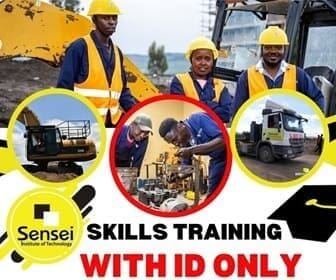With the exception of being MP for Langata and later Kibra constituency, Mr Raila Odinga has never held any other political office courtesy of the ballot.
But the 72-year-old son of Kenya’s first Vice-President, the late Jaramogi Oginga Odinga, has influenced and shaped local politics to earn his place in history.
That he has contributed to the expansion of democratic space and introduction of devolved governments has not been in doubt.
However, like his father, the quest for presidency appears to be vanishing. His critics would love to write him off. But not yet.
BUNGLED
Mr Odinga’s rise to the office of Prime Minister was after a bungled election.
Both sides, observers said, seemed to have fiddled with the numbers in their strongholds — leading to the 2007 post-election violence.
Currently, all eyes are on Mr Odinga, who has launched the National Resistance Movement (NRM) to spearhead his plans to push for new presidential election.
He says NRM won’t recognise President Kenyatta as duly elected, and has announced the formation of “people’s assembly”.
Mr Odinga is not new to controversy. Political pundits say this could be a component of his political genes or an orientation from his college days in the Eastern-bloc during Cold War years.
TREASON
A man who came to national limelight in August 1982, when he was arrested and charged with treason in connection with that year’s aborted coup by a section of the Kenya Air Force, Mr Odinga has since been part of a group pushing for changes, at first through covert and later overt operations.
During the trial of the coup ring-leaders, Senior Private Hezekiah Ochuka and Sgt Pancras Okumu, the prosecution alleged Raila had attended coup planning meetings at the Odingas’ family house in Kisumu and at a house on Nairobi’s Ngong Road.
The prosecution further alleged that on the morning of the coup, Ochuka had driven through Nairobi streets in a private car provided by Raila. Ochuka and Okumu were found guilty and sentenced to hang, which they were in 1985.
But the State dropped the treason charges on Raila and instead placed him in detention without trial.
DETENTION
It would later emerge that while in detention, Raila cut a deal with the State to be a witness at the famous Njonjo Commission of Inquiry into allegations that Njonjo plotted to topple the government.
In a ruthless power consolidation in the aftermath of the coup attempt, President Moi was intent on killing two birds with one stone.
He wanted to purge the Luo Nyanza political faction that clearly was behind the coup attempt, but at the same time clip the wings of the influential Central Kenya bloc in his inner circle, fronted by Cabinet Minister Charles Njonjo.
Raila would be brought from detention to testify at the Njonjo inquiry that, at the time the August 1982 military coup attempt took place, Njonjo had plotted to stage his own coup using the dreaded General Service Unit (GSU).
FREE
Eventually, Moi said he’d forgiven Njonjo of the coup allegations. Raila too, would later be set freewithout any charges.
In a 1992 interview Raila granted me, he had a puzzling answer when I asked him to clear the air about his alleged involvement in the 1982 coup attempt. He told me: “Well, I won’t answer that question for now because I don’t want to tell you the truth, and I don’t want to lie to you!”
Raila’s first induction to over-the-table politics came with the re-introduction of multi-party politics in 1992, when he was appointed to the post of deputy director of elections in the opposition party Ford-Kenya, then led by Jaramogi.
By then, Raila had been overshadowed by Ford Kenya luminaries, among them James Orengo, the late Ooki Ooko Ombaka, and Prof Anyang’ Nyongo, who were trusted by Jaramogi within the party.
ORENGO
Others in the outer circle included Paul Muite, Gitobu Imanyara and Wamalwa Kijana. All these feared what insiders called the conspiratorial element in Raila, which even the father didn’t think was good for the party.
On Jaramogi’s death in January 1994, Raila plotted to take over the party chairmanship but was beaten to it by Mr Orengo.
By that time, the first vice chairman Paul Muite and Secretary General Gitobu Imanyara had quit the party.
After two years of push and pull that ended in a bloody, but abortive party elections in Thika Stadium, Raila quit Ford-Kenya to form his own outfit, the National Development Party.
He went on to win the Lang’ata seat and, in the 1997 election, his supporters eclipsed all those who stood on a Ford Kenya ticket in his Nyanza backyard.
Source link-nation.co.ke






